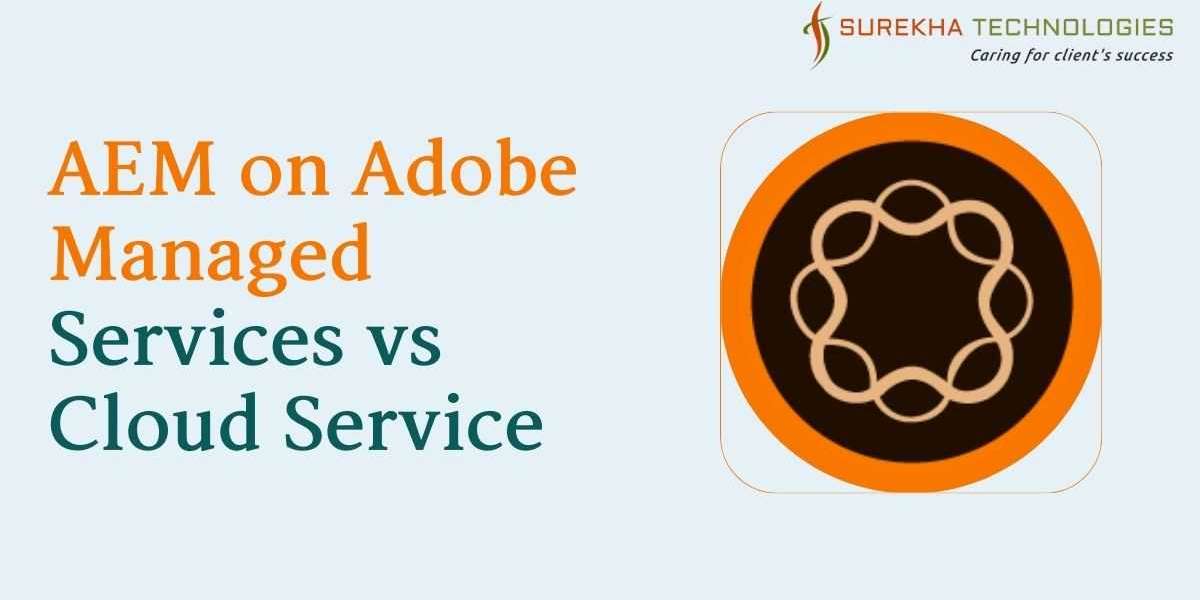Adobe Experience Manager (AEM) is a comprehensive content management solution for building websites, mobile apps, and forms. It helps in managing marketing content and assets, thus facilitating a seamless digital experience. When considering AEM, organizations often face a choice between Adobe Managed Services (AMS) and Adobe Cloud Service. Both options offer unique advantages and can significantly impact the efficiency and performance of AEM development and AEM content management services.
Understanding Adobe Managed Services (AMS)
Adobe Managed Services provides a fully managed environment for AEM. AMS handles the infrastructure, security, updates, and scaling, allowing organizations to focus on their core business activities. Here's a closer look at what AMS entails:
Key Features of Adobe Managed Services
- Infrastructure Management: AMS takes care of the entire infrastructure, including servers, storage, and networking. This eliminates the need for organizations to invest in and manage their hardware.
- Security: AMS provides robust security measures, including firewalls, encryption, and regular security updates. This ensures that your data and applications are protected against threats.
- Scalability: AMS offers flexible scaling options, allowing organizations to adjust their resources based on demand. This is particularly useful for handling traffic spikes during marketing campaigns or seasonal sales.
- Performance Optimization: AMS includes performance monitoring and optimization services to ensure that your AEM instance runs smoothly and efficiently.
- 24/7 Support: Adobe provides round-the-clock support with AMS, ensuring that any issues are promptly addressed.
Advantages of Adobe Managed Services
- Reduced IT Overhead: By offloading infrastructure management to Adobe, organizations can reduce their IT overhead and focus on strategic initiatives.
- Enhanced Security: With dedicated security measures, AMS provides a higher level of protection compared to on-premises solutions.
- Reliability: Adobe's expertise in managing AEM ensures a reliable and high-performing environment.
- Cost Predictability: AMS offers a predictable cost structure, which can simplify budgeting and financial planning.
Understanding Adobe Cloud Service
Adobe Cloud Service is a cloud-native solution for AEM, leveraging Adobe's robust cloud infrastructure. It offers a modern approach to content management, providing scalability, agility, and advanced features. Let's delve into what Adobe Cloud Service brings to the table:
Key Features of Adobe Cloud Service
- Cloud-Native Architecture: Built on a cloud-native architecture, Adobe Cloud Service offers unparalleled scalability and flexibility. It can easily adapt to changing business needs.
- Automatic Updates: Adobe Cloud Service provides automatic updates, ensuring that your AEM instance is always running the latest version with the newest features and security patches.
- Global Reach: With data centers around the world, Adobe Cloud Service ensures low latency and high performance for global audiences.
- Integration Capabilities: Adobe Cloud Service seamlessly integrates with other Adobe Experience Cloud products and third-party solutions, enhancing your digital ecosystem.
- AI and Machine Learning: Leverage Adobe Sensei, Adobe's AI and machine learning framework, to enhance content personalization and analytics.
Advantages of Adobe Cloud Service
- Scalability: The cloud-native architecture allows for effortless scaling, ensuring that your AEM instance can handle increased traffic and data without performance issues.
- Innovation: Regular updates mean you always have access to the latest features and improvements, driving innovation in your digital strategies.
- Cost Efficiency: By using a cloud-based model, organizations can reduce capital expenditures on hardware and pay for only what they use.
- Agility: The flexibility of the cloud allows organizations to quickly adapt to market changes and launch new initiatives faster.
Comparing AMS and Cloud Service
When deciding between Adobe Managed Services and Adobe Cloud Service, it's essential to consider your organization's specific needs, goals, and resources. Here are some factors to consider:
Deployment and Management
- Adobe Managed Services: Ideal for organizations that prefer a managed environment with minimal internal IT involvement. AMS handles infrastructure, security, and updates, allowing organizations to focus on content and strategy.
- Adobe Cloud Service: Suitable for organizations looking for a cloud-native solution with advanced scalability and integration capabilities. It requires a more hands-on approach but offers greater flexibility and innovation.
Cost Structure
- Adobe Managed Services: Typically involves a predictable subscription fee that covers infrastructure, support, and management services. This can simplify budgeting but may be more expensive in the long run.
- Adobe Cloud Service: Operates on a pay-as-you-go model, which can be more cost-effective, especially for organizations with fluctuating resource needs. However, costs can become unpredictable if not managed carefully.
Security and Compliance
- Adobe Managed Services: Provides robust security measures and compliance with industry standards, making it a good choice for organizations with strict security and regulatory requirements.
- Adobe Cloud Service: Also offers strong security features, but organizations may need to ensure they comply with specific industry regulations and standards.
Performance and Scalability
- Adobe Managed Services: Offers reliable performance with the ability to scale based on predefined parameters. Ideal for organizations with steady growth and predictable traffic patterns.
- Adobe Cloud Service: Provides unmatched scalability and performance, suitable for organizations experiencing rapid growth or variable traffic patterns. The cloud-native architecture ensures seamless scaling without performance degradation.
Conclusion
Both Adobe Managed Services and Adobe Cloud Service offer compelling solutions for AEM development and AEM content management services. The choice between the two depends on your organization's specific needs, budget, and strategic goals.
Adobe Managed Services is ideal for organizations seeking a fully managed environment with robust security, reliable performance, and predictable costs. It allows businesses to focus on their core activities without worrying about infrastructure management.
On the other hand, Adobe Cloud Service is perfect for organizations looking for a modern, scalable, and agile solution. It offers the flexibility to adapt to changing business needs, integrate with other Adobe Experience Manager services, and leverage the power of AI and machine learning for enhanced digital experiences.
Ultimately, the decision should be based on a thorough assessment of your organization's requirements and a clear understanding of the benefits each option provides. By choosing the right AEM deployment model, you can unlock the full potential of Adobe Experience Manager and drive your digital transformation forward.








